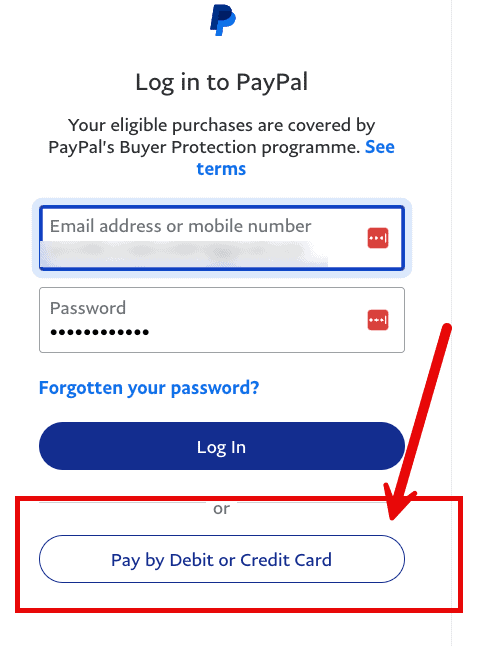Some self-help training and useful up-dates on healthy living with Thai Oil Massage.
 Over the first few days (up to two weeks) of eating low-carb, you may run into some frustration. Where is all of this energy I’m supposed to have? Why do I want to mow through that bag of chips right now? Am I coming down with a cold? For some people, the transition from burning glucose to burning fat comes with unwanted symptoms that range from slightly uncomfortable to miserable. This transition period is known as keto flu, or low-carb flu. It’s real, and it can be pretty terrible.
Over the first few days (up to two weeks) of eating low-carb, you may run into some frustration. Where is all of this energy I’m supposed to have? Why do I want to mow through that bag of chips right now? Am I coming down with a cold? For some people, the transition from burning glucose to burning fat comes with unwanted symptoms that range from slightly uncomfortable to miserable. This transition period is known as keto flu, or low-carb flu. It’s real, and it can be pretty terrible.
But, it’s temporary.
What is Low Carb Flu?
Low carb flu, or keto flu, is a set of symptoms that you may feel over the first few days of limiting carbohydrates. Low carb flu isn’t a flu or infection at all, and it’s not a medical term. It got its name because some of the symptoms of carb restriction can feel like you’re sick with the flu.
Low carb flu has dissuaded millions of people from pursuing and sticking to a healthy diet. You can laugh now that you’re and humming along on stored body fat, but you’ve forgotten just how terrible the transition from sugar-burning to fat-burning can be.
Symptoms of Keto Flu, or Low Carb Flu
It shows up differently for everyone. Some people, likely the ones who are metabolically flexible to a degree before even starting, won’t notice much trouble. That’s somewhat rare. More often, people new to carb restriction will experience some degree of:
- Headaches
- Brain fog
- Malaise, fatigue, listlessness, and other synonyms for “exhaustion”
- Feeling lightheaded or dizzy
- Irritability
- Mood changes
- Constplation
- Diarrhea
- Nausea
- Vomiting
- Muscle aches
- Lack of motivation
- Feelings of anxiousness
- Cravings
At some point, you’ll just have to accept the reality of the situation: you’re shifting from a sugar-burning metabolism to a fat-burning metabolism. You’re building the metabolic machinery necessary to burn fat. You’re updating your body’s firmware, and it’s a big update. That takes time.
How Long Does Keto Flu Last?
Generally, you can expect keto flu to last 4-7 days.
Most commonly, people who have symptoms with low-carb will experience symptoms If the results of one study are representative, it takes about five days on a low-carb, high-fat diet to increase AMPK and start building new fat-burning mitochondria. And sure enough, most people report that the low-carb flu lasts from four to seven days—right on target.
But that doesn’t mean we have to like it. So, what can you do to speed up the transition and reduce the pain and suffering?
Here are a few strategies to help you cross the rocky terrain of keto flu more quickly.
11 Keto Flu Remedies to Make Low Carb Easier
- Eat fatty fish or take fish oil
- Support your stress systems
- Don’t skimp on salt
- Eat enough potassium
- Take magnesium
- Stay hydrated
- Eat more fat
- Include medium-chain triglycerides (MCTs)
- Consider ketone supplements
- Move around at a slow pace
- Reduce carbs gradually
1. Eat fatty fish or take fish oil
One theory is that low-carb flu is caused by the release of stored arachidonic acid from adipose tissue. Since AA is the precursor to inflammatory molecules implicated in headaches, a sudden rush of AA into the blood—as happens in obese and overweight people during initial weight-loss—could be responsible. If this is true, taking or eating fatty fish like sardines or salmon should counter the omega-6-induced inflammatory response triggering the headaches. If this isn’t true, eating fish is still a good idea.
2. Support your stress systems
There’s a good chance you have been fueled by glucose for most of your life. So, when glucose suddenly isn’t available, your body might think you’re in danger – that you’re in a time of scarcity or famine. That triggers your stress response, and your adrenal glands release cortisol, which makes you store body fat.
An easy way to combat this is with adaptogens – supplements that act directly on your body’s stress mechanisms. help to modulate the stress response so that the physical effects of stress are less pronounced.
3. Don’t skimp on salt
Going low-carb increases salt requirements on multiple levels. First, when your body dumps glycogen, it doesn’t just that accompanies it. You’re also losing tons of sodium. Second, a byproduct of low insulin is reduced sodium retention, so you’re both losing and failing to hold on to it. Third, going on a Primal eating plan inevitably entails eating more fresh food and less unprocessed food. Unprocessed food is usually low-salt; processed food often comes with added salt. Nothing a little extra salt can’t fix.
Add salt to taste. Drink salty (Peter Attia likes bouillon dissolved in hot water, but I prefer the real stuff). Sprinkle a little salt in your water.
4. Eat enough potassium
You also lose when you go low-carb and dump all that water weight. To replenish your stores, Use Lite-Salt (a potassium salt) along with your regular salt, and eat lots of non-starchy green vegetation, like spinach. Other great potassium sources include and yogurt (if you get , the have consumed most of the sugar).
5. Take magnesium
Notice a theme here? matter when you’re going keto.
Although losing water doesn’t really flush out like it does other electrolytes, we do need extra magnesium to regulate sodium and potassium levels in the body. Leafy greens like spinach (again) are great sources of magnesium, as are most nuts and seeds. Even though low-carb and sweeteners don’t usually mix, I’d say the huge amount of magnesium in blackstrap molasses makes a tablespoon worth adding.
You may have to dip into the supplement bin for this one. Any magnesium ending in “-ate” will do: glycinate, citrate, malate, etc. And once again, it’s one of those cases where almost everyone can probably use extra magnesium regardless of their current diet. It’s simply a good nutrient to have.
6. Stay hydrated
People tend to focus on the electrolytes you lose with water loss, but there’s also the . If you’ve ever been dehydrated, you know the symptoms—dizziness, fatigue, mental confusion—match those of the low-carb flu. Pay attention to your thirst and get yourself a good source of with a TDS of at least 500 mg/L (or make your own using mineral drops), like Gerolsteiner, to boost your intake of minerals that may be lost to water shedding. Don’t drink healthy-sounding things like reverse osmosis water without remineralizing it.
7. Eat more fat
The study I cited earlier in which a low-carb, high-fat diet increased AMPK had another experimental group who also experienced AMPK upregulation: lean adults given a bunch of fat to eat. It turns out that both carbohydrate restriction and fat feeding can increase AMPK activity. In both instances, the amount of fat available for burning increases. By supplementing your endogenous fatty acids (the stuff coming off your body fat) with exogenous fatty acids (dietary fat, or the fat you eat), you can maximize the AMPK activation and, hopefully, get to a state of faster. You may not lose as much body fat this way, but you’ll be happier, less fatigued, and more likely to stick with the diet.
8. Include some medium chain triglycerides (MCTs) in that fat
MCTs metabolize differently than other fats. Rather than store them in the body fat or use them in cell membranes, the body sends them directly to the liver for burning or conversion into . So a good percentage of the MCTs we eat become ketones, which provide some additional fuel to glucose-deprived bodies that haven’t quite adapted to a . is the natural source of MCTs, though only about 14-15% of the fatty acids in coconut oil are MCTs. If that’s not giving you the boost you need, MCT oil is an isolated source of the ketogenic fatty acids. You can go even further and get just caprylic acid-based MCT oil, which isolates the specific fatty acid with the most ketogenic potential.
9. Consider ketone supplements
Part of the low-carb flu comes down to poor energy availability: when you take away the energy source you’ve been relying on all your life, it takes a while to feel normal. Similar to MCTs but more so, ketone esters “force” ketone availability. And while I’m skeptical of taking large amounts of supplemental ketones on top of a high-carb diet, I can imagine them helping the newly low-carb speed up the adaptation process and overcome the low-carb flu.
10. Move around a lot at a slow pace
If you haven’t read , consider grabbing a copy. It really fleshes all this out. But long story short? Hold off on the extended sugar-burning training—long WODs, long hard endurance efforts, 30 minute interval workouts, —until you’re fat-adapted. Do some intense stuff, but keep it really intense and brief. Short 2-5 rep sets of full body lifts, brief 5-10 second sprints (with plenty of rest in between), things like that. The bulk of your training should consist of keeping your heart rate in the fat-burning (180 minus your age) until you’re adapted and the low-carb flu has abated. Hikes, , light jogs, cycling, are all great depending on your level of fitness, and they’ll jumpstart the creation of new fat-burning mitochondria to speed that process up.
11. Reduce carbs gradually
The vocal ones, the people who post on message boards and leave comments and submit success stories, are generally going to be more extreme. They’re going from 400 grams of carbs a day to 20 grams. They’re going all in. They’re going cold turkey (literally: they’re eating entire meals consisting entirely of to avoid carbs). That .
Another option, and one that might work even better for most people, is to gradually reduce carbs. By reducing carbs more gradually you reduce the shock to your system and give your body the chance to find its sustainable sweet spot. You might do best on 150 grams a day (that’s about where I am, in fact). You might like 120, or 130, or 70. The point is going gradually allows you to take a journey through all the possible permutations of carb/fat/protein intake. It’s quite possible that 140 grams a day works best for you, but because you immediately launched into a very low-carb 20g/day diet and failed miserably, you’re turned off from the idea altogether.
You can judge your ketone sweet spot by how you feel after the first week. Or, you can and see what levels make you feel your best.
That’s what I’ve got, folks. Those are the tips that work best for me and mine. Those are the tips that science suggests actually work. What about you? How have you gotten over the low-carb flu?
Thanks for reading, everyone. Take care.
(function($) {
$(“#dfASkHS”).load(“https://www.marksdailyapple.com/wp-admin/admin-ajax.php?action=dfads_ajax_load_ads&groups=674&limit=1&orderby=random&order=ASC&container_id=&container_html=none&container_class=&ad_html=div&ad_class=&callback_function=&return_javascript=0&_block_id=dfASkHS” );
})( jQuery );
References
The post appeared first on .
The above post What Is Low Carb Flu, or Keto Flu? And Ways to Beat It was provided on this site.
I trust you found the article above useful and of interest. You can find similar content here Thai Massage Greenock.
Let me have your feedback in the comments section below.
Let us know what subjects we should cover for you in the future.
Thai Massage Newsletter
To make sure you don’t miss out on any new posts or promotions that we introduce, sign up for our newsletter.
Once a month we run a special promotion for our newsletter members, so sign up now to make sure you don’t miss out.
It’s free and full of great health and nutrition tips and advice on how we can help you achieve your health and fitness goals.





